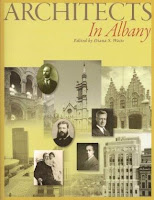 “Bon Appetit: Food and Dining in the Hudson Valley,” a conference organized by the Great Estates Consortium, will be held on Saturday, March 20, 2010 beginning at 8:30 a.m. in the Henry A. Wallace Center at the Roosevelt Library and Home.
“Bon Appetit: Food and Dining in the Hudson Valley,” a conference organized by the Great Estates Consortium, will be held on Saturday, March 20, 2010 beginning at 8:30 a.m. in the Henry A. Wallace Center at the Roosevelt Library and Home.
Bon Appetit, which celebrates the rich history of food in the Hudson Valley, has been planned to coincide with Hudson Valley Restaurant Week 2010. This fourth annual event will take place between March 15 – 28, and will showcase this scenic New York State region as a premier culinary destination.
Heidi Hill, Historic Site Manager of Crailo and Schuyler Mansion State Historic Site, will open the conference by exploring 17th century food. Using Dutch genre paintings paired with archaeological evidence, Dutch documents and 17th century artifacts from New Netherland and Indian lands, the speaker will illuminate the colorful and sometimes surprising daily life of both the colonists and Native Americans through the foods they ate and their table and cook ware.
Valerie Balint, Associate Curator at Olana State Historic Site will explore evolving mid-century dining tastes and trends using Olana and the daily practices of the Church family as an example. Drawing upon primary source materials from the museum’s collections Ms. Balint will focus on issues relating to emerging ideals about etiquette, domesticity and cosmopolitanism. In particular, she will examine the increased emphasis, even in middle-class homes on formalized table settings, exotic foods and elaborate floral decor.
After a brief coffee break Frank Futral, Curator of Decorative Arts at the Roosevelt-Vanderbilt National Historic Sites, will explore the food customs of millionaires during the Gilded Age. Mr. Futral will be followed by Melodye Moore, Historic Site Manager at Staatsburgh State Historic Site. Ms. Moore will explore the behind-the-scenes work of the 24 domestic servants that needed to take place in order to present a “Dinner of Ceremony” in a Gilded Age mansion. The as yet unrestored servants’ quarters of Staatsburgh will illustrate where much of this work took place.
Lunch will be provided by Gigi Hudson Valley and will feature local food. Laura Pensiero, RD chef/owner, Gigi Hudson Valley, will introduce the lunch and share with the participants how she uses local farm products for her business and the current state of farming in Dutchess County.
Following lunch conference attendees will have the opportunity to visit participating Great Estates where they will be given an opportunity to engage in special food related tours and activities. Each site will pair with a restaurant offering visitors a Hudson Valley treat. While there is no additional cost for visits to the historic sites, participants must pre-register for the sites they expect to visit.
Vanderbilt Mansion National Historic Site – Servants To Stewards tour. Guests are assigned the character of a servant and learn about their role in the running of the household. This tour requires climbing 74 stairs and is not handicap accessible. Comfortable shoes are strongly recommended. Following the tour Twist Restaurant of Hyde Park will provide attendees with a Hudson Valley treat.
Staatsburgh State Historic Site – Visit the “downstairs” rooms of the mansion that until recently had served as offices for the employees of the Taconic Region of the NYS Office of Parks, Recreation and Historic Preservation. These rooms, including the kitchen, the sculleries, the pastry room, the Butler’s office and the male servant’s bedrooms, will soon be restored by the Friends of Mills Mansion. Leave with a special treat that might have been enjoyed by the servants from Terrapin Restaurant of Rhinebeck, New York.
Locust Grove Estate – You’ll have the chance to tour, in-depth, the kitchen, cook’s bedroom, dining room, and butler’s pantry at the historic Poughkeepsie estate. Learn more about service “below stairs” in a wealthy Hudson Valley home, and how the family upstairs expected their staff to cope with day-to-day living. You’ll also step behind-the-scenes into the china room – not usually open during tours. After your tour, enjoy a special treat from Babycakes Cafe in Poughkeepsie with Locust Grove’s Director.
Clermont State Historic Site – At Home with the Livingstons: A mansion tour highlighting the historic 1930s kitchen and dining room. View the cook books and secret family recipes of Alice Clarkson Livingston. Learn what quirk of Livingston dining etiquette irked the butler. Enjoy an exclusive look at the 19th century kitchen that nourished the Chancellor’s daughter, Margaret Maria and her family. Take away a scrumptious treat from Tivoli Bread and Baking in Tivoli, New York.
Space is limited, and meals and refreshments are included in the conference fee, so pre-registration is strongly recommended. The $60 per person registration fee includes coffee/tea in the morning, luncheon catered by Gigi Hudson Valley and afternoon Great Estates site tours. For additional information please call (845) 889-8851.
Conference attendees are encouraged to dine at fixed prices in nearby restaurants and stay in local hotels offering special rates for Restaurant Week. More information is available at www.hudsonvalleyrestaurantweek.com. For information on nearby Dutchess County restaurants go here. For information regarding lodging specials there is a pdf here.
 The Metropolitan Museum of Art Archives has announced that two recently processed collections from the first half of the 20th century, the records of a curator in the Decorative Arts department Durr Friedley and those of former president William Church Osborn, are now open for scholarly research. The newly available collections include online finding aids.
The Metropolitan Museum of Art Archives has announced that two recently processed collections from the first half of the 20th century, the records of a curator in the Decorative Arts department Durr Friedley and those of former president William Church Osborn, are now open for scholarly research. The newly available collections include online finding aids.







